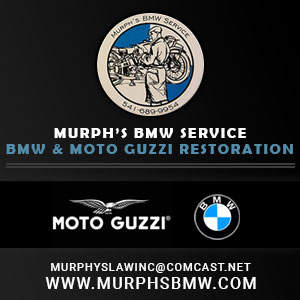Tire mounting hints
Is there a trick to mounting the tire without pinching tube?
The back tube and tire went on no problem. I have pinched 3 front tubes attempting to mount the new tires.
I have basic tire spoons with wheel protectors, i first tried with no air in the tube and then with a little air and i pinched each time. am i just being impatient and rushing the process?
I struggle with this very same issue. Only thing I know to suggest is dusting the tube with corn starch to make the surface a little more slippery. I also put some air in the tube to get the wrinkles and folds out and then let the air back out before stuffing it in the tire.
former Airmarshal, IL.
I put in just a bit of air pressure to give the tube shape. I also leave the tire in the full sun for a bit to warm it up. Next I use a bit of soapy water on the bead. Suppose practice makes perfect or a least pretty good .
I have several tricks. Some already stated here....
• Use professional tire mounting lube from the LAPS. It's cheap and slicker than anything else. Not only will it help mount the tire, but good lubricant insures the tire will pop out fully and correctly onto the rim.
• The best motorcycle tire tools are wide and flat, with the very slightest hook at the end to grab the rim. You only want about 3/8" of the tool inside the tire, and then only to hook the rim. If you're pinching tubes, then too much of the tool is inside the tire. Most of the commercially available irons are for working on car rims, which don't use tubes, and so they protrude inside much further.
• Inflate the tube until it just barely takes on its full shape. One valve stem nut goes inside the rim, the other on the outside.
• The area of the tire next to the valve stem is the first part of the tire to be dismounted, and conversely, the last part of the tire to be popped over/on. This allows the opposing side of the tire (180° across the rim) to take full advantage of the rim's central recess, thus allowing maximum slack for working with the tire. Having the maximum slack means less struggling for you.
• The new tire may have a painted dot or circle on one sidewall. Install the tire with this mark next to the valve stem.
• The time you are most likely to pinch a tube is installing the last 6 inches of bead. If you have used good lubricant, then use a "dead blow" hammer to work this final section of tire over and on. No tool = no pinch.
Hope this helps.
Owning an old Airhead is easy.
Keeping an old Airhead running great is the true test.
Got it, no pinch this time.
Thank you for all the hints, they definitely helped.
Anthony
Anthony -
Congrats !
Most tires will have a mold line or some very small feature that shows up right at the edge of the rim. When the tire is properly mounted and fully inflated, you can run your finger tip around the rim and feel or see this feature on both sides of the tire. This is your insurance that the tire is fully seated on the rim. If the tire is not fully seated, then this feature in the rubber will dip down behind the rim.
What this means is that the bead of the tire has not fully "popped out" and is not fully seated on the rim. On the BMW wheels with spokes, fully seating the tire is usually not that hard, but on the snowflake wheels they can sometimes be a bear to get properly seated. Even with professional lubrication, you may have to run the pressure up to 50 psi or higher to achieve full seating. You will hear a definite "Pop !" when a stubborn bead finally pops out.
If the tire is not fully seated, then the tire cannot run true. This could spell trouble, especially on rib tires or tires with a central groove. On wheels where the tire is NOT fully popped out, the material of the tire is slightly pulled to the side at that one location. Therefore the tire cannot inflate to its intended round shape, and a front end "shimmy" will start to show up.
I suggest running a freshly mounted tire (still wet with lubrication) up to at least 40-45 psi, then do the bead line inspection on both sides before lowering the pressure to the suggested amount. Then balance the wheel and install.
Hope this helps.
Owning an old Airhead is easy.
Keeping an old Airhead running great is the true test.
I've used the stock tire irons for 30 years and the trick I learned is to never go past 90 deg. (straight up) with the iron.
Good ole' KY gel does wonders when applied to relieve friction between tight fitting elements! Pain free!
- 27 Forums
- 1,801 Topics
- 10.2 K Posts
- 5 Online
- 5,524 Members





